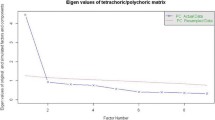Abstract.
Background: The objective of this study was to compare, using a self-report questionnaire, the dimensions of psychosis across different patient groups in a community mental health service (CMHS) and in non-patients in the general population. Methods: The Community Assessment of Psychic Experiences (CAPE) is a 40-item self-report instrument with positive, negative and depressive symptom dimensions. Seven hundred and sixty-two patients and 647 subjects in the general population filled in the CAPE. In 555 of the 762 patients, a DSM-IV diagnosis was made. The following DSM-IV categories were used in the analyses: 1. Schizophrenia and Other Psychotic Disorders (n = 72), 2. Mood Disorders (n = 214), 3. Anxiety Disorders (n = 129). The patient and non-patient groups were compared on the three dimensions of the CAPE using multivariate regression analysis. Results: The patient groups scored significantly higher on the positive, negative and depressive dimensions than the non-patients. Patients with psychotic disorders had the greatest difference in positive psychosis items compared to non-patients (β = 0.94, 95 % CI: 0.7–1.18), whereas patients with mood and anxiety disorders had the highest depressive symptom scores, and positive symptom scores that were intermediate to that of non-patients and patients with psychotic disorders (mood disorders: β = 0.53, 95 % CI: 0.39–0.68; anxiety disorders: β = 0.22, 95 % CI: 0.04–0.39). The CAPE distress score adjusted for the corresponding frequency score was not significantly different between the patient groups, but compared to the general population, patient status did contribute significantly to the level of distress. Discussion: Patients with anxiety and mood disorders had elevated scores on positive psychosis items, indicating that expression of psychosis in non-psychotic disorders is common. The finding of elevated scores of the patient groups on all three dimensions compared to non-patients suggests that the psychopathology associated with psychotic disorders varies quantitatively across DSM-IV categories.
Similar content being viewed by others
Author information
Authors and Affiliations
Additional information
Accepted: 31 October 2002
Correspondence to Prof. Jim van Os
Rights and permissions
About this article
Cite this article
Hanssen, M., Peeters, F., Krabbendam, L. et al. How psychotic are individuals with non-psychotic disorders?. Soc Psychiatry Psychiatr Epidemiol 38, 149–154 (2003). https://doi.org/10.1007/s00127-003-0622-7
Issue Date:
DOI: https://doi.org/10.1007/s00127-003-0622-7




